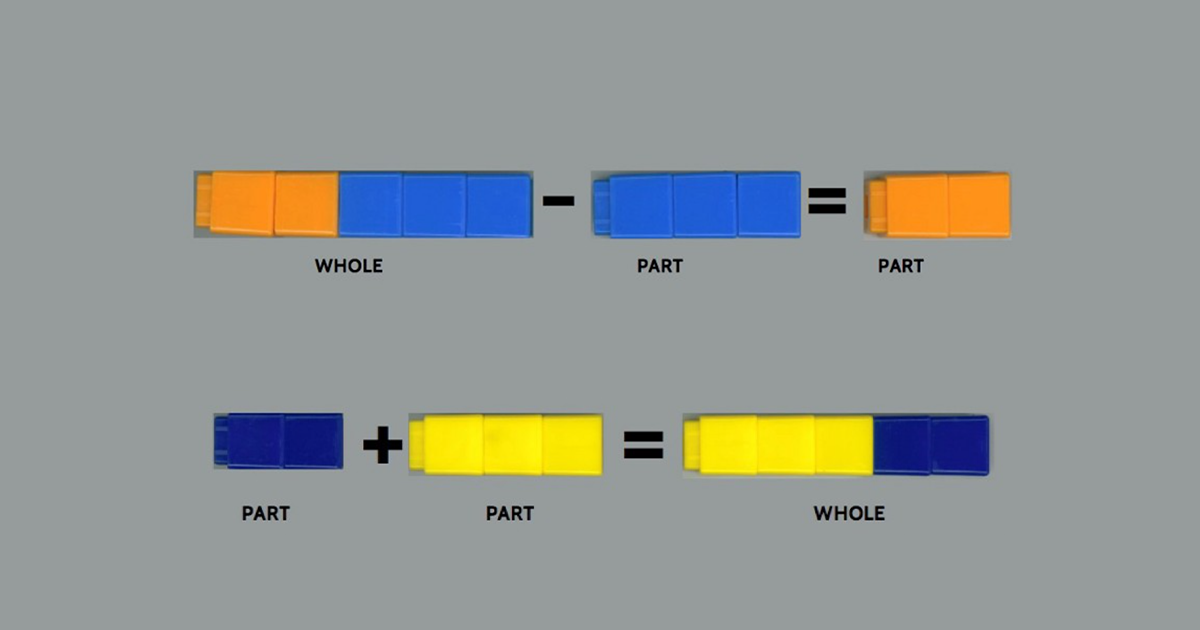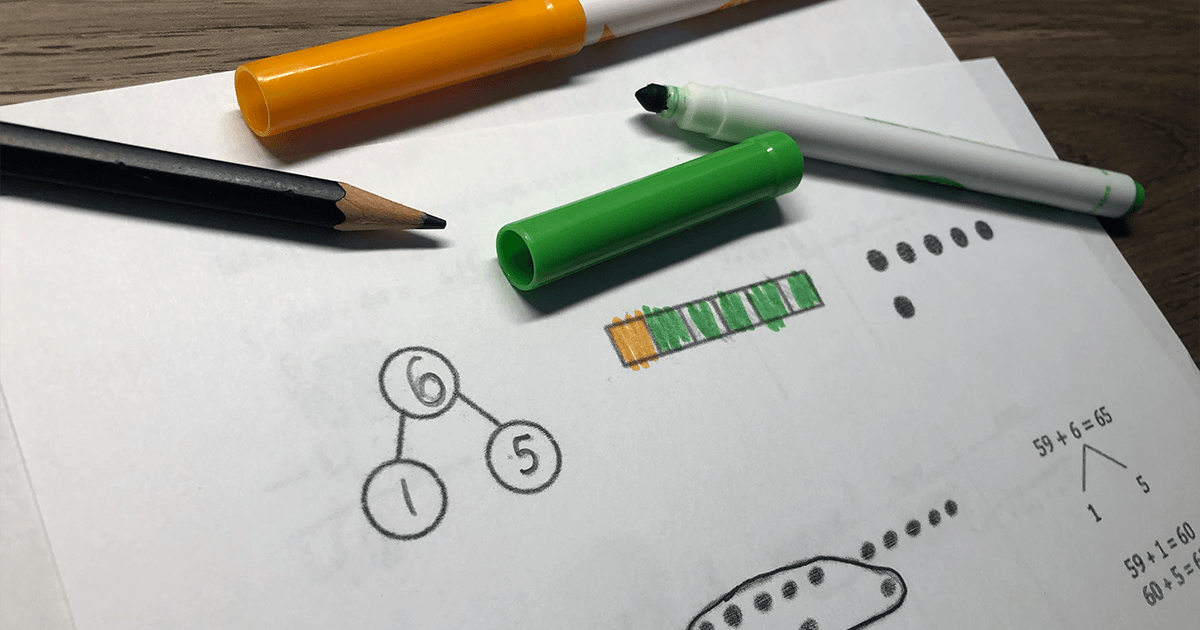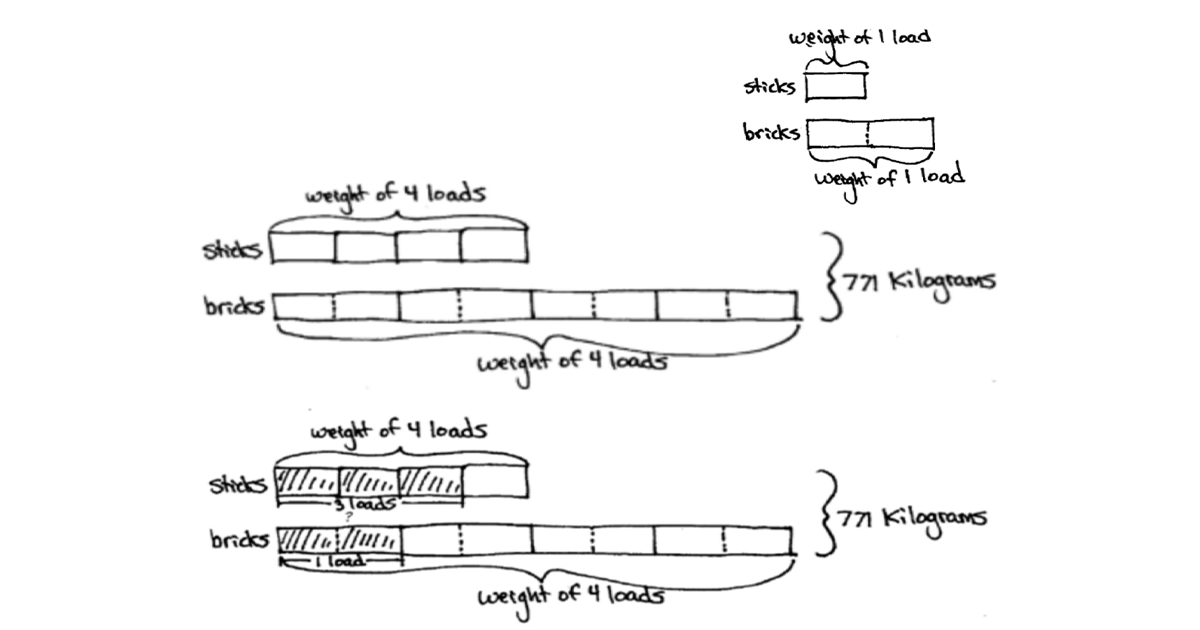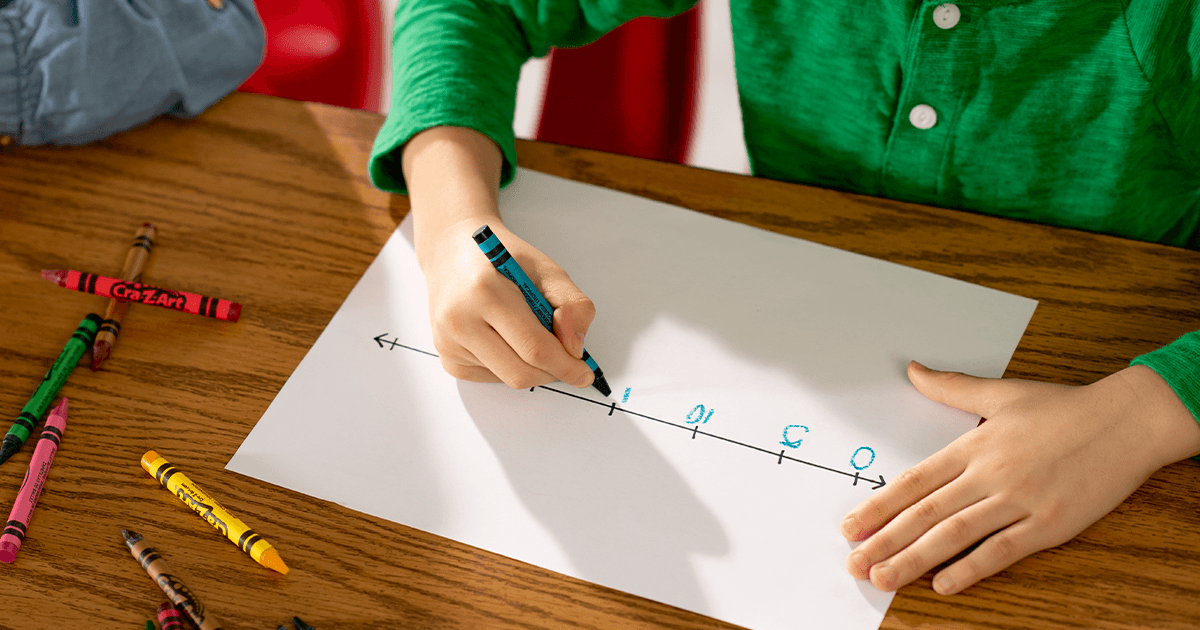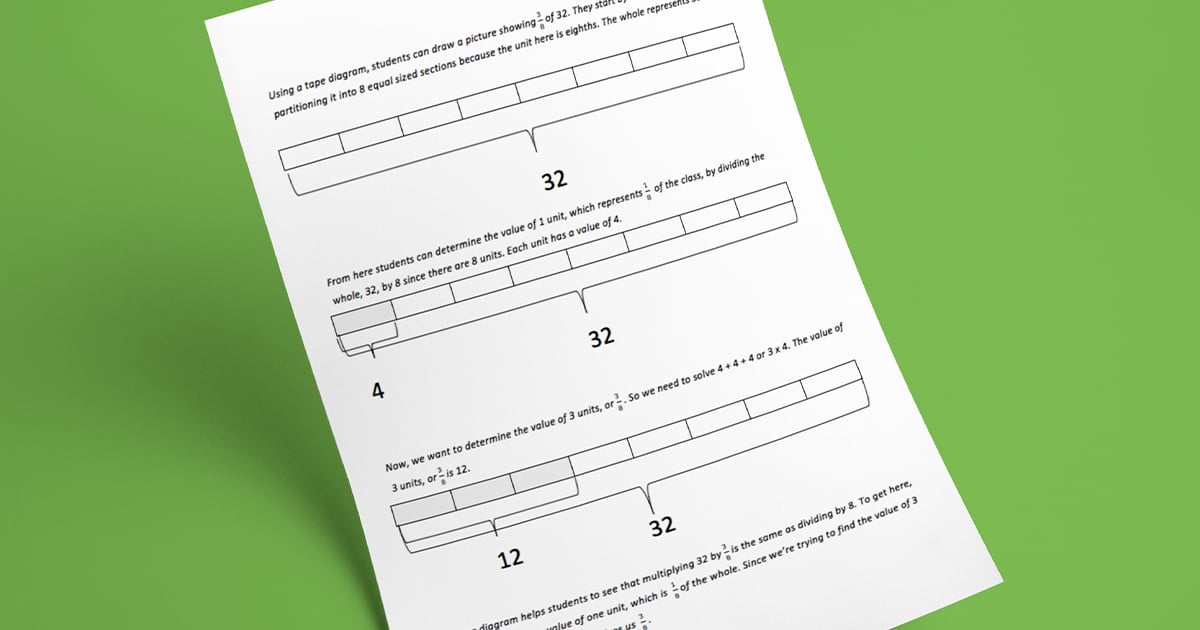Posted in: Aha! Blog > Eureka Math Blog > Models Instructional Design > Problem Solving the RDW Way
STRATEGY
What do you see when you look at this student’s work? I see a student who draws and labels models to reason abstractly and quantitatively about the relationships in the problem; who attends to precision in modeling and solving the equation. In other words, I see the end result of teaching a systematic approach to problem solving, what we refer to as “Read, Draw, Write,” or RDW.

When faced with story problems young children will often arbitrarily add whatever numbers they see. The RDW process short-circuits this impulse by giving students tools to think about and model the relationships presented in a given situation. This enables them to solve problems accurately.
In this process, we ask students to read the problem and think about what information is given. Do we know the whole and one part, in which case we can subtract or count on to find the missing part?

Or do we know the parts, in which case we put the parts together to find the whole, or total?

This work with the part-whole relationship helps students make sense of the problem.
Next, students draw a model to represent the information. The two models used most often to show the part-whole relationship are the number bond and the tape diagram.

In the problem pictured, Precious chose to use the tape diagram. In the first part of the problem, she draws and labels the longer bar with M for Milan, and 35 for the quantity. She draws and labels a shorter bar with R for Rene, and the question mark to indicate the unknown. She labels the part she knows as 16. This model helps her see that she knows the whole and one part, so she knows she can subtract. She uses the chip model to support her work with the subtraction algorithm.

In the second part of the problem, Precious again uses the tape diagram to show the relationship of the numbers, but this time she chooses to use a different strategy to subtract, arrow notation. In both parts, Precious could have counted on or she could have used compensation. These are other strategies she has learned in Eureka Math.
This student’s work shows detailed, specific choices rather than arbitrary combinations of numbers. It also shows flexible thinking. These are some of the hallmarks of Eureka Math.
This post is by Lisa Watts-Lawton, a Grade 2 lead writer for Eureka Math who also teaches full-time.
Submit the Form to Print

Lisa Watts-Lawton
Topics: Models Instructional Design



